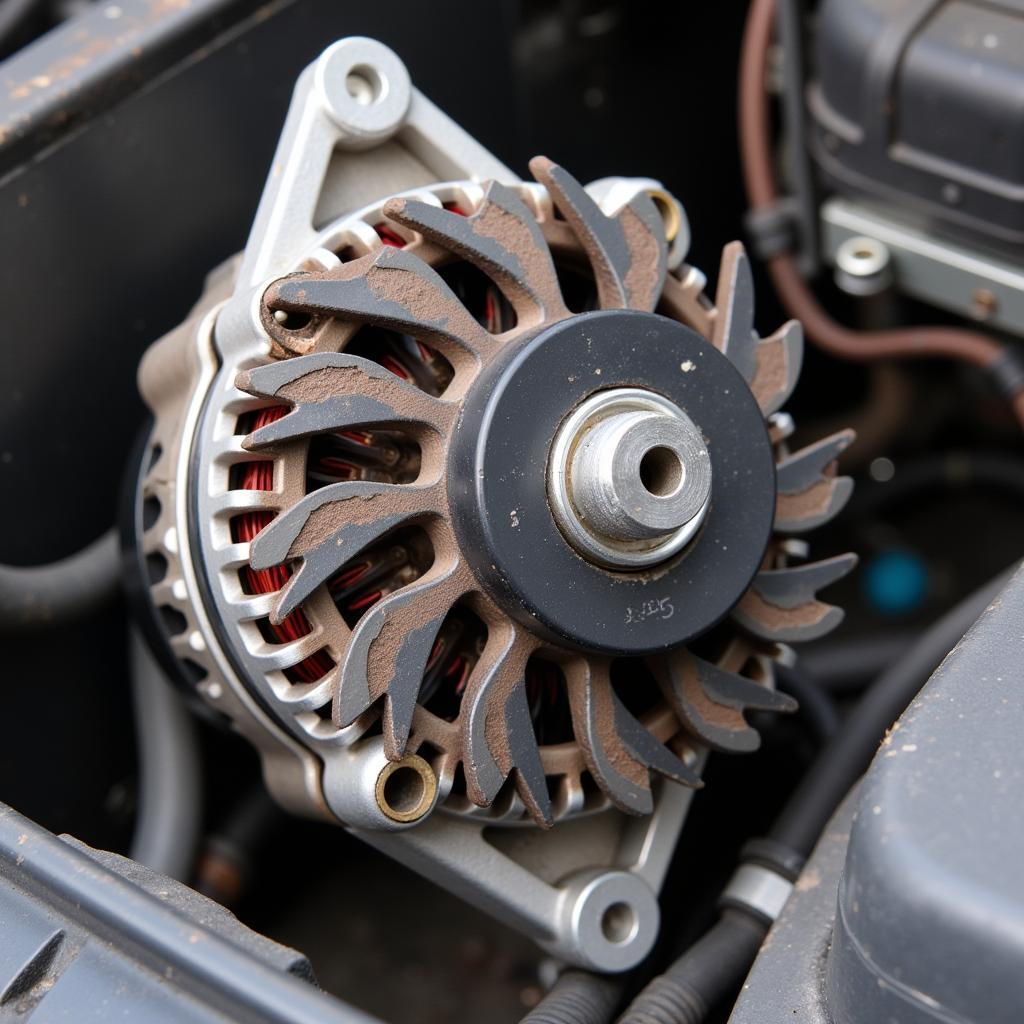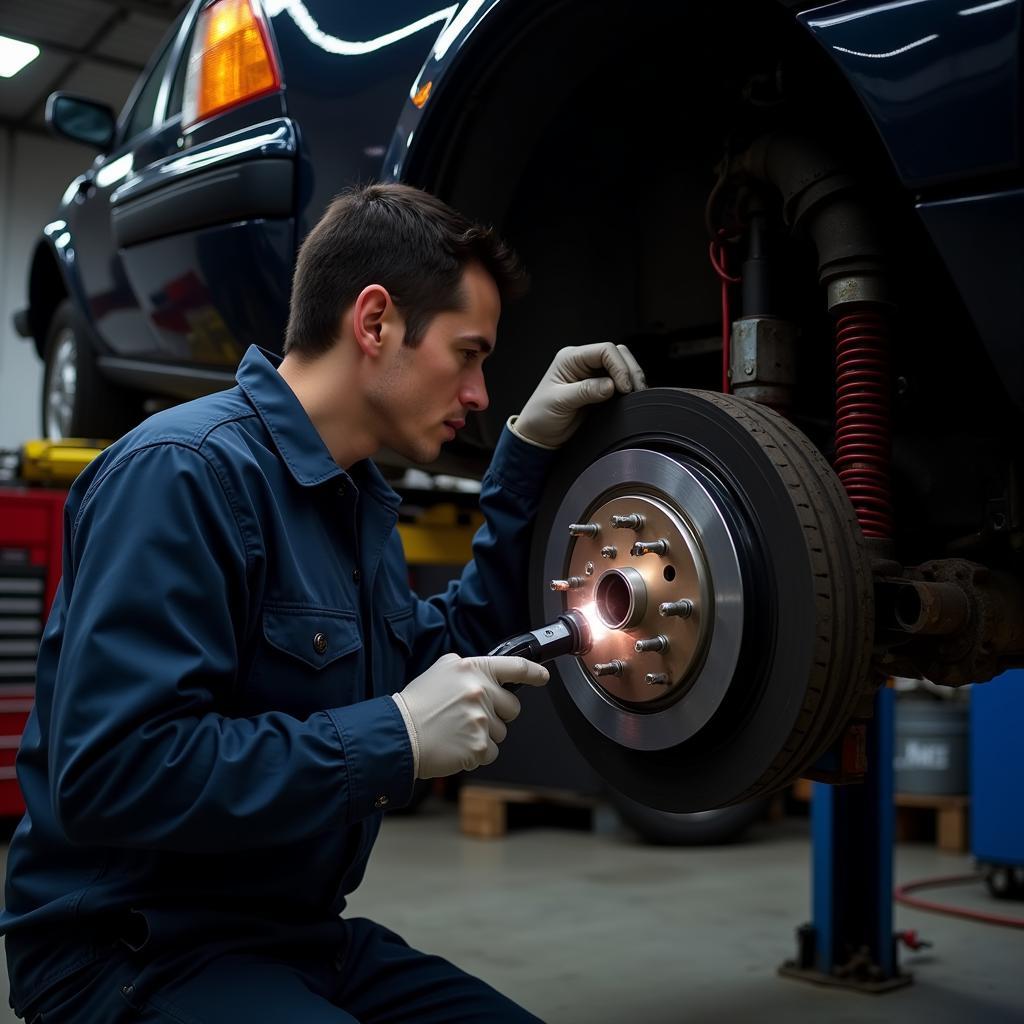A good alternator should keep your car battery charged. So, if your car battery is draining even with a good alternator, you’ve got a parasitic draw somewhere. This article dives deep into the reasons why a car battery drains despite a working alternator and provides practical solutions to diagnose and fix the issue.
Understanding the Battery-Alternator Relationship
The alternator and battery work together to power your car’s electrical systems. The alternator charges the battery while the engine is running, and the battery provides power when the engine is off or during starting. A healthy relationship between these two components is crucial for a smoothly running vehicle. If your car battery is draining, even with a seemingly good alternator, it indicates a problem that needs immediate attention.
Common Causes of Car Battery Draining Alternator Good
Several factors can contribute to battery drain even when the alternator is functioning correctly. One of the most frequent culprits is a parasitic draw, where an electrical component continues to draw power even when the car is off. This can be anything from a faulty interior light to a more complex issue within the car’s computer system. Another possibility is a bad battery. Even if the alternator is charging, a failing battery might not hold the charge effectively, leading to draining.
Identifying a Parasitic Draw
A parasitic draw is a silent battery killer. It slowly drains your battery over time, often leaving you stranded with a dead battery. Identifying these draws can be tricky but is essential to resolving the issue.
- Check interior lights: Make sure all interior lights, including the glove box and trunk lights, are turned off. Sometimes a faulty switch can prevent a light from fully turning off.
- Inspect aftermarket accessories: Aftermarket accessories, such as car alarms or stereo systems, can be significant sources of parasitic draw if not installed correctly.
- Examine the cigarette lighter: Even with nothing plugged in, a faulty cigarette lighter socket can drain the battery.
Bad Battery Symptoms and Testing
While the alternator is often blamed for battery issues, the battery itself might be the problem. A battery that’s nearing the end of its lifespan might not hold a charge effectively, even with a functioning alternator.
- Slow engine crank: If your engine cranks slowly, especially in cold weather, it could indicate a weak battery.
- Dim headlights: Dim headlights, especially when the engine is idling, can be a sign of a failing battery.
- Battery age: Car batteries typically last 3-5 years. If your battery is older than that, it’s a good idea to have it tested.
How to Fix a Draining Car Battery
Once you’ve identified the cause of the drain, fixing it can range from simple DIY tasks to more complex repairs requiring a professional mechanic.
- Disconnect the negative battery cable: This is a crucial safety step before working on any electrical components.
- Locate and remove the faulty component: If you’ve identified a specific component causing the drain, such as a faulty interior light, remove or replace it.
- Check fuses and relays: A blown fuse or faulty relay can also cause electrical issues and drain the battery. Inspect and replace any damaged fuses or relays.
- Consult a professional mechanic: If you’re unable to identify the cause of the drain, or if the issue is more complex, it’s best to consult a qualified mechanic.
Preventing Future Battery Drain
Preventing future battery drain is often easier than fixing the problem. Here are some tips to keep your battery healthy:
- Regularly check your battery’s health: Have your battery tested at least once a year, especially if it’s older than three years.
- Minimize short trips: Short trips don’t give the alternator enough time to fully recharge the battery.
- Limit the use of accessories when the engine is off: Avoid using the radio, lights, or other accessories for extended periods when the engine isn’t running.
 Inspecting a Car Alternator
Inspecting a Car Alternator
Conclusion
A car battery draining with a good alternator indicates an underlying electrical issue that needs addressing. By understanding the relationship between the battery and alternator, identifying common causes of battery drain, and following the diagnostic and repair steps outlined in this article, you can resolve the issue and ensure your car starts reliably every time. Don’t let a draining battery leave you stranded – take proactive steps to keep your car’s electrical system in top shape.
FAQ
- Can a bad alternator drain a good battery? Yes, a faulty alternator won’t charge the battery properly, leading to draining.
- How long can a car battery sit without draining? A healthy battery can typically sit for 2-3 months without significant drain.
- How do I test my car alternator? You can test your alternator using a multimeter or by taking your car to a mechanic.
- What are the signs of a bad car battery? Signs include slow engine crank, dim headlights, and electrical issues.
- How can I prevent my car battery from draining? Limit short trips, minimize accessory use when the engine is off, and regularly check your battery’s health.
- Can extreme temperatures affect battery life? Yes, both extreme heat and cold can shorten battery lifespan.
- What should I do if my car battery keeps draining even after replacing it? Consult a mechanic to diagnose any potential electrical issues.



